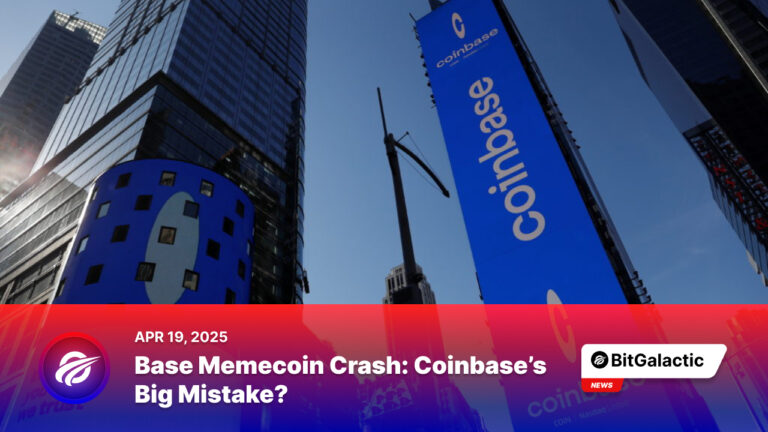Base Memecoin Crash: Coinbase’s Big Mistake?
Yo, what’s up, crypto fam? It’s your boy from BitGalactic, diving into the wild world of crypto drama! Coinbase’s Base blockchain just sparked a massive controversy with a viral memecoin that skyrocketed to $17 million, then crashed hard. Was this a shady move or a bold experiment? Stick around as we unpack this mess with 10 years of crypto expertise and some spicy takes you won’t hear anywhere else! Let’s roll!
Alright, let’s break it down. Coinbase’s Base, a layer-2 blockchain launched in 2023, is all about fast, cheap transactions compared to Ethereum. It’s been a cash cow, pulling in $120 million in revenue. But this week, Base got caught in a storm. They posted on X, hyping a phrase—“Base is for everyone”—and linked it to Zora, a platform that turns social media posts into tradable tokens. Boom! A token was born, hitting a $17 million market cap in hours.
Base didn’t officially launch or sell this token. Zora’s tech auto-tokenizes content, and Base just posted, earning $75,000 in creator fees from trading. But the crypto community wasn’t having it. Onchain data shows early buyers grabbed big chunks, pumped the price, then dumped it, tanking the token 90% in minutes. Ouch. Blockchain dev Suhail Kakar called it “deeply disappointing,” accusing Base of knowing the hype would burn retail traders.
Now, let’s add some BitGalactic perspective. This smells like memecoin mania gone wrong. Memecoins—tokens tied to viral posts or celebs—are crypto’s slot machines. They’re volatile, speculative, and often predatory. In 2025, memecoins are still hot, with over $50 billion in total market cap, per CoinGecko. But they’re a double-edged sword. Base’s move feels like they leaned into the hype without enough guardrails.
This isn’t new. Remember 2021’s Squid Game token? It pumped 1000x before insiders rugged investors, wiping out $3 million. Or Dogecoin’s Elon-driven pumps? Base’s case echoes these—official accounts amplifying speculative assets, knowing retail will FOMO in. The difference? Base calls this a “content coin,” not a memecoin, claiming it’s about rewarding creators, not gambling. Jesse Pollak, Base’s head, says trading these like memecoins is a recipe for pain. But c’mon—traders don’t care about semantics when profits are on the line.
70% of memecoin launches in 2024 ended with a 50%+ price drop within 48 hours, per Dune Analytics. Base should’ve known their post would ignite a frenzy. Their defense? “We didn’t launch a token.” But posting on Zora was like tossing a match into dry grass. Retail traders got burned, and the backlash is real.
So, what’s next? Base might double down on “content coins” to normalize onchain creator rewards, but they’ll need clearer disclaimers to avoid another PR disaster. Memecoins will keep booming in 2025, but regulators are circling. The SEC’s been eyeing speculative tokens since 2023—Base’s stunt could draw heat. Long-term, layer-2s like Base need to focus on utility, not hype, to stay legit.
What do you think? Was Base reckless, or are content coins the future? Drop your take in the comments, and let’s debate! Should Coinbase apologize, or is this just crypto being crypto?
Alright, crypto fam, that’s a wrap! If you loved this deep dive, smash that like button, hit subscribe, and ring the bell for more BitGalactic breakdowns. We’re dropping weekly vids to keep you ahead in the crypto game. Follow us on X for real-time updates, and let’s keep building this community! Peace out, and stay galactic!
Share this post


